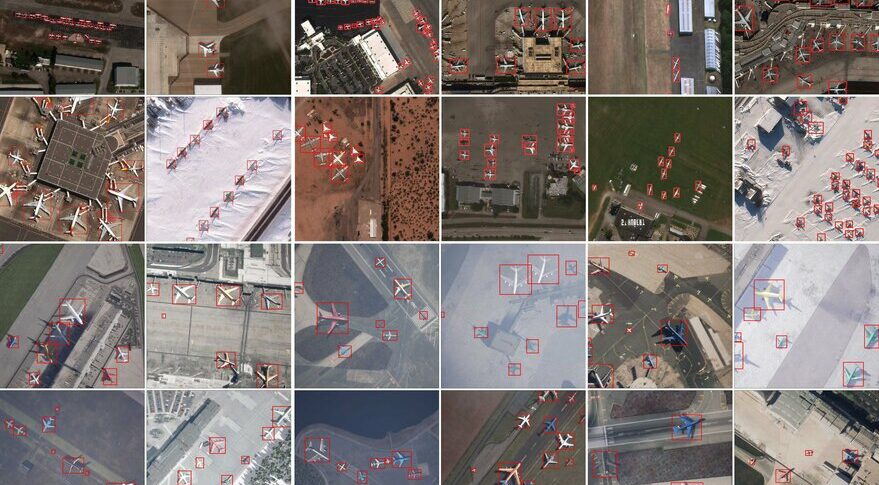
Synthetic data helps train algorithms to spot rare objects (Image Credit: Space News)
DENVER – In spite of ever-expanding geospatial databases, certain objects like specific submarines are rarely spotted in satellite imagery. In those cases, synthetic imagery can help.
“Subject matter experts to identify objects in scenarios are still very important,” Mark Munsell, National Geospatial-Intelligence Agency deputy director of data and digital information, told SpaceNews. “We anticipate they will be supplemented by synthetic moving forward.”
Computer vision models only work after they have ingested extensive data of various objects, which is not always available.
“Synthetic data is, I think, the future,” Kevin O’Brien, Orbital Insight CEO. “To be able to look at what we call rare objects, specific types of missile launchers or other things that can be used for military purposes, is going to benefit our end customers like NGA, but I think it’s also going to benefit the industry in general.”
Orbital Insight is working under a Phase 2 NGA Small Business Innovation Research contract to explore the use of synthetically generated data to train computer vision models to detect novel objects in electro-optical satellite imagery.
At the 2022 GEOINT Symposium, L3Harris Technologies was showcasing its ability to create synthetic training data both for electro-optical and synthetic aperture radar data.
“We have a proven synthetic training data capability that offers an alternative solution for times when you do not have enough real images,” said William Rorrer, L3Harris business development and product manager principal.
For example, L3Harris is demonstrating how the company creates synthetic imagery of fighter jets against different backgrounds, in various weather conditions, and at distinct viewing and sun angles.
“Our focus has been on the accuracy of the synthetic data,” said Stacey Casella, L3Harris senior director for geospatial processing and analytics. “As long as you have that accuracy, the training of the AI algorithms can be robust.”
L3Harris is among the companies that won Basic Order Agreements, similar to indefinite-delivery, indefinite-quantity awards, from the Defense Department’s Joint Artificial Intelligence Center Data Readiness for Artificial Intelligence Development, a five-year program with a $242 million ceiling aimed at harnessing commercial capabilities to meet technical challenges.
L3Harris’ synthetic data work draws on the company’s experience as a sensor manufacturer.
“We have a legacy of creating fake data for things like satellite sensor trade studies,” Rorrer said. “We want to understand what this image is going to look like and have a very accurate understanding of the analytics before putting a payload on orbit.”
Synthetic training data was a popular topic at the GEOINT Symposium. Talks on the subject were presented by CACI International, Rendered.ai, Riverside Research, Scale AI and Visimo.








